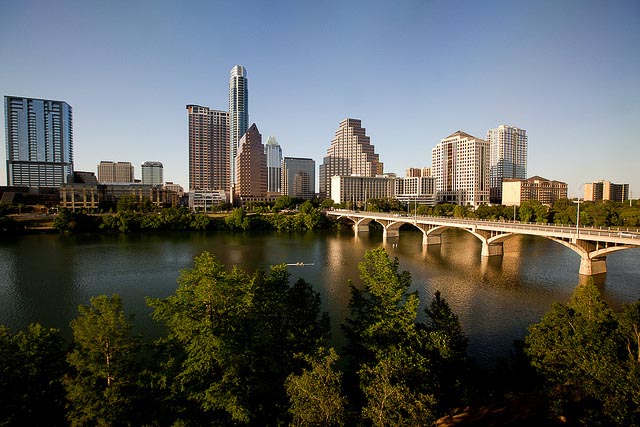While the Urban Edge strives to provide readers with daily news and insights about urban policy, we’re also voracious readers of city news ourselves. As part of a new weekly feature, Senior Editor Ryan Holeywell highlights the week’s most interesting articles from around the web about urban policy and city life.
Dear Architects: Sound Matters
The New York Times explores the intersection of architecture and sound, with an interactive feature that shows off the sounds of places like the New York subway, Grand Central Station, and the High Line. "We talk admiringly about green or energy-efficient buildings, with roof gardens, cross-ventilation and stairways that encourage residents to walk, because good design can aspire to improve public health," the newspaper writes. "But we don’t talk nearly enough about how sound in these buildings, and in all the other spaces we design, make us feel." The author's message: architects -- even those who aren't designing concert halls -- should be keenly aware of the impact their space has on sound.
The Four Types of Cyclists You'll Meet on City Streets
City Lab argues that one way we can better understand cyclists and how to serve them is by dividing them into four categories. By far, the majority of cyclists can be classified as "interested but concerned." The others fall into categories including "strong and fearless," "enthused and confident," or "no way no how." The piece highlights how different types of riders respond to different types of bike infrastructure.
Public Health Departments Have Lower Standards Than Zoos
Your local zoo likely went through a mandatory accreditation process. But chances are your health department -- which oversee the sanitation of restaurants and drinking water in your community -- didn't. There's a growing movement to change that, Governing reports. Advocates fear that without accreditation, many public health agencies are relying on outdated standards. Today, a national accreditation board offers a voluntary process that few agencies actually use.
The Future of Driverless Cars Isn't Going to Look Like You Think
Autonomous vehicles are't going to all look, feel, and function in the same way, the Washington Post's Wonk Blog argues in a new piece. Instead, expect different fleets for different types of customers. "In the autonomous future, there may be a GM/Lyft fleet (the young, friendly brand), and a Ford/Google fleet (the utilitarian one), and a Toyota fleet ('dull and consistent,' Columbia University professor Dave King suggests), and a BMW fleet (for luxury!), and an Uber one (for the shortest, most ruthless wait time mathematically possible)," Wonk Blog writes.
To Stop Gentrification From Hurting the Poor, Neighborhoods Need to Change Faster
In tight housing markets, the poor tend to suffer when the rich get wealthier. But in more slack markets, there's evidence suggesting increases in others' income may benefit the poor, Vox writes. In other words, in some places -- where housing is plentiful -- gentrification can be a win-win. Vox argues that for this to happen in dense, East Coast cities, zoning rules should be relaxed in order to create more housing supply on a limited quality of land.

